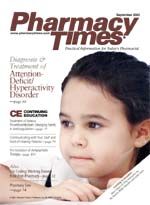Publication
Article
Pharmacy Times
Double Checks Are Worth the Time They Take
Author(s):
Now, with staffing shortages and other time resource issues looming over health care, the value of double checks again has been called into question, especially since most organizations have experienced errors that reach patients despite a double-checking process. The results of research in community pharmacies and hospitals, however, suggest that double checks are an effective error-reduction strategy if conducted properly.
Double Checks Identify a Higher Rate of Errors Than People Realize
In a study in which community pharmacists randomly checked completed prescriptions awaiting pickup, 4.2% of the 5700 prescriptions were found to have errors.1 Of these, 2.1% were considered to be potentially clinically significant. In another study, when pharmacists randomly checked 15,600 completed prescription forms and attached computer labels, discrepancies were identified in 2.6% of them, and 1.4% were potentially clinically significant.1
The Average ?Checking Error Rate? Is About 5%
The ?checking error rate? is the percentage of errors missed on a check. In studies where ?artificial errors? were introduced into simulated pharmacy orders and medication carts, 93% to 97% of such mistakes were identified during an independent double check.1,2 Thus, even with relatively small error rates, a significant number of mistakes can be identified over time.
It Is Hard to Find One?s Own Mistakes
In a pharmacy simulation, participants are significantly better at finding the mistakes of others, rather than their own.1 A reason is that confirmation bias (seeing what one is most familiar with rather than what is really there) fogs the ability to always see mistakes that are present. Putting a different set of eyes on the same prescription improves accuracy.
Independent Double Checks Work Best
The person checking needs to form an independent judgment without cues from the person doing the initial work. Asking someone to ?Check this prescription for 10 mg of Zyrtec? would not result in an independent judgment. Such instructions would create a mental set for the checker that could lead to verifying the originator?s conclusion (that it is 10 mg of Zyrtec), even if erroneous. It would be more effective to have 2 people calculate a dose separately and then compare their answers, than to have them perform the calculation together or to have 1 person share his or her answer with the other before the double check occurs. People may be swayed by the opinions of others, even more so if the other person holds a position of authority or has more experience.
It is true that double checks are not as effective as system changes that make it difficult for people to make mistakes. There is evidence, however, that, if performed properly, double checks can reduce the risk of an error reaching the patient.
With the exception of requiring licensed staff members to verify the work of all nonlicensed staff members, double checks should be limited to situations that involve high-alert medications. These situations comprise chemotherapy (including methotrexate), insulin, opiates, and anticoagulants; complex processes (compounding, calculating doses); and high-risk patient populations (pediatric, elderly, or pregnant patients; patients with severe congestive heart failure, known renal impairment, or liver disease). Too many checkpoints dilute the effectiveness of the process and may actually permit medication errors, which have to be corrected later.
Simulations may be valuable in training staff members to carry out independent double checks effectively. Completing worksheets and recording initials also can formalize the process and enhance documentation. In any case, double checks do have their place in health care.
For a list of suggested reading, send a stamped, self-addressed envelope to: References Department, Attn. D. Ryan, Pharmacy Times, 241 Forsgate Drive, Jamesburg, NJ 08831; or send an e-mail request to: [email protected].







